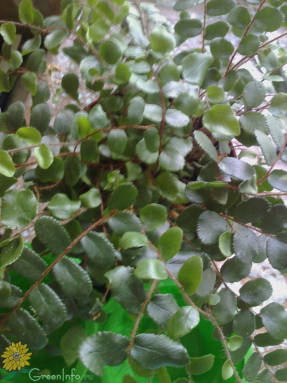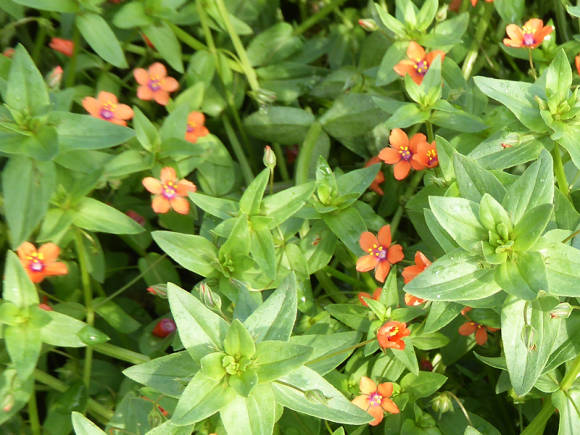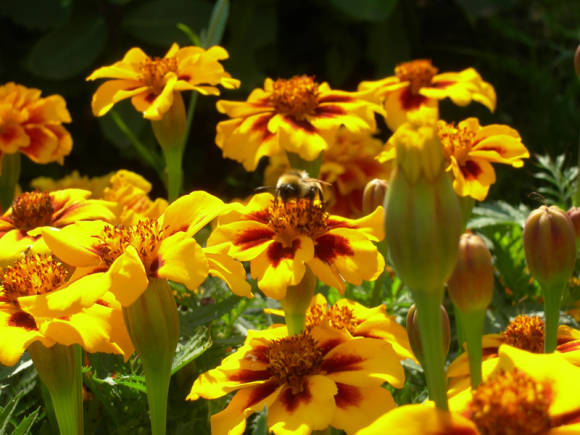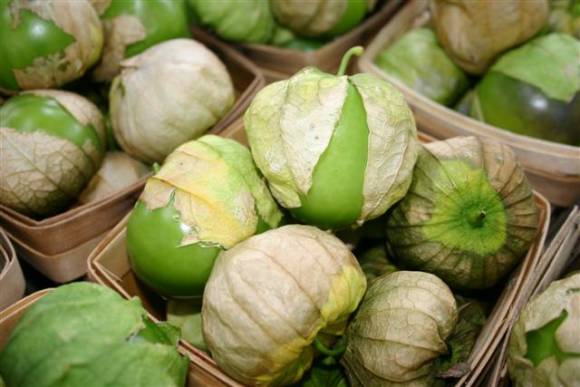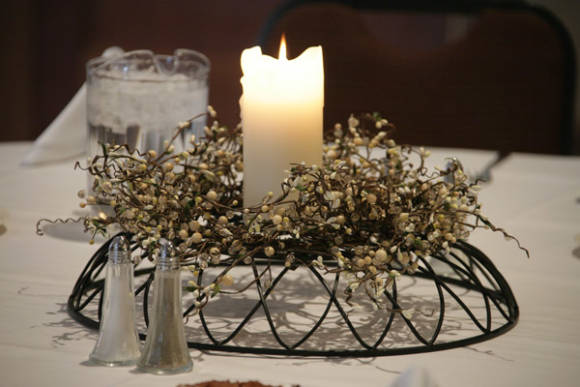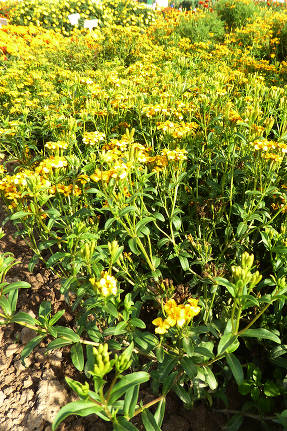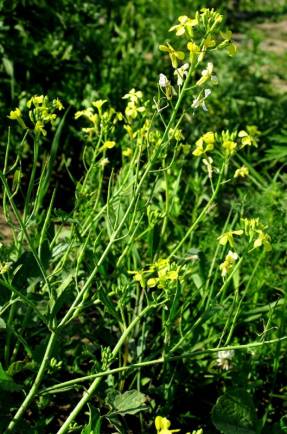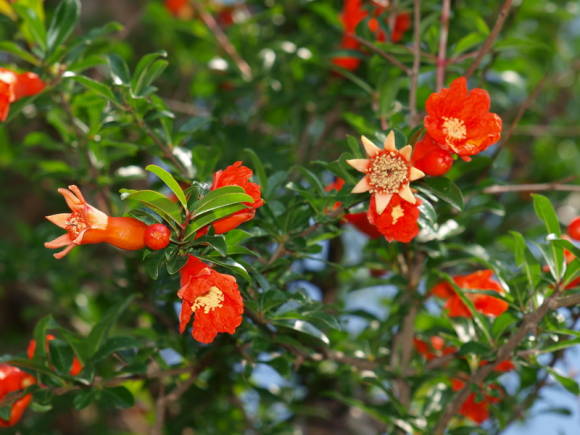Chinese lanterns or Indoor maples - as abutilons are often called - their bright flowers are really very similar to glowing paper Chinese lanterns, and the split multi-lobed leaves with denticles at the edges resemble maple leaves.

Abutilones are unpretentious plants, they are distinguished by good health, rapid growth, and recover well with a loss of decorativeness. They can be recommended to novice growers.
The vast majority of varieties grown in indoor conditions are complex hybrids under the general name Abutilon hybrid (Abutilon × hybridum). They were probably obtained with the participation of Abutilon Darwin (Abutilon darwinii), Abutilona Theophrastus Abutilontheophrasti), Abutilon spotted (Abutilon pictum).

Among the species abutilones that have produced several remarkable varieties, it should be noted abutilon megapotamskiy (Abutilon megapotamicum) and abutilone spotted, as well as their hybrid - Miller's abutilone (Abutilon x milleri).
Read about these and other types of abutilones on the page Abutilon. A huge variety of varieties is conventionally divided into several groups: Bella group abutilones (Abutilon 'Bella') are truly compact varieties that grow to small sizes without the use of retardants that inhibit vertical growth. Plants are characterized by good branching, continuous and abundant flowering. The flowers are large, up to 8 cm in diameter, in the form of a wide-open bell, in various pastel and bright shades in the range of white, yellow, orange and red. The leaves are carved, resembling maple leaves. Most suitable for home keeping, easily grown from seed, bloom in June when sown in February-March. Perfect for container keeping. Abutilones of the Maximus group (Abutilon 'Maximus') - large plants about 1 (up to 3) meters high, with large bell-shaped flowers of yellow, orange or red color with darker veins. In variegated varieties, leaf mosaicism is caused by the mosaic virus, which does not affect other parts of the plant in any way. They are propagated only by cuttings, since the virus is rarely transmitted through seeds. Abutilones of this group are better suited for container keeping. Abutilones of the Giant group (Abutilon 'Giant') are characterized by larger leaf sizes than the previous groups, can grow up to 3 meters or more. Bell-shaped flowers about 5 cm, yellow, pink, purple, apricot or crimson. Due to their large size, they are more suitable for container keeping, but with regular pruning or retardant processing, they will remain compact. Illumination... Abutilons prefer bright light, they endure direct sunlight for several hours a day. In rooms, they should be placed on sunny windowsills. But at this time, it is necessary to provide good ventilation in the room so that the plants do not overheat and do not get burned. They are able to grow in a less illuminated place, but with a lack of light they stop blooming, and variegated leaves lose their saturation. Plants should be accustomed to the sun's rays gradually, in case of burns, white dry spots form on the leaves. In the warm season, it is advisable to take out abutilons to an open balcony or garden, providing protection from strong winds and the scorching midday sun. In winter, when kept warm, they need additional lighting, they are very responsive to the illumination of Bella series abutilones, which will willingly continue their flowering. Temperature. In summer, the optimum temperature for growth and flowering is about + 18 ... + 22 ° C, abutylons tolerate coolness at night well, but they must be protected from possible frosts.A prolonged decrease in temperature below +15 ° C can lead to a stop of growth and flowering, and a temperature above +30 ° C will lead to the fall of the buds. In winter, with a lack of light, the temperature should be lowered to + 12 ... + 15 ° C, although abutilones can tolerate lower positive temperatures. You can keep them in winter and in a warm room, but with the obligatory backlighting with fluorescent lamps. About lamps - in the article Lamps for plant illumination. Watering regular and moderate throughout the year. In summer and with warm winter content, it is enough to wait for only the top layer of the soil to dry between waterings, and in cool conditions it is better to let the soil dry out more thoroughly, without leading to a complete loss of moisture. Abutilones tolerate even a short drought well, quickly restoring the turgor of the leaves after watering. It should be watered under the root with warm, settled water. Do not leave water in the pan for a long time, its excess must be drained after 15-30 minutes. Read more about watering in the article Watering rules for indoor plants. Air humidity Abutilones prefer medium, with too dry air they can be affected by spider mites. When kept warm in winter, spray the plants 2-6 times a day, at temperatures below + 18 ° C, cancel the spraying. In the summer, spraying is required only during the heat. Top dressing... Abutilones do not need large amounts of fertilizers, they are suitable for universal complex mixtures for indoor plants with microelements. Over-fertilization can stop flowering, and too much nitrogen will cause oversized leaves to grow. Abutilones are fed during active growth and flowering from spring to autumn, with a cool winter content, all feeding is canceled, and with warm and light, half the dose is applied. Read more in the article Top dressing of indoor plants. Soil and transplant... Young plants are transplanted by gentle handling with a slight increase in volume each year. Adult plants are reloaded every few years. A ready-made peat universal slightly acidic soil (pH 5.5-6.5) is suitable as a substrate. Read more in the article Transplanting indoor plants. Pruning and shaping. Many varieties have rather fast growth, and to maintain the compactness of the crown, they need pruning or the use of special preparations that inhibit growth. When kept cool in winter, pruning can be done in the fall, after flowering ends. With warm winter content, it is more expedient to prune in early spring, removing all weak elongated shoots. If necessary, individual branches can be pruned at any time of the year. When using special drugs that inhibit growth (retardants), strictly follow the instructions. Abutilones are easy to cut. This method of reproduction guarantees the preservation of varietal traits, while when grown from its own seeds, splitting is possible, the grown plant will not be identical to the parent plant. Abutilones with mosaic foliage reproduce only vegetatively. Apical or intermediate parts of shoots with 4-5 leaves are taken on cuttings. The bottom leaf is removed, an oblique cut is made on the stem under it, powdered with Kornevin and planted in a peat (or coconut) tablet or in sterile peat soil, adding about the same volume of perlite to it. The planted stalk is placed in a greenhouse with high air humidity. Roots appear in 10-20 days. Read more in the article Cutting indoor plants at home. Bella series abutilones can be grown from purchased seeds (Abutilon Bella F1, a mixture of varieties), getting plants with different flower colors from one package at the same time. To decorate the balconies, they are sown in February-March in trays or pots, sprinkled on top with a thin layer of vermiculite or soil.The container with seeds is covered from above with glass or foil to prevent the soil from drying out, and placed in a warm place with a temperature of + 18 ... + 22 ° C. The seeds do not require light to germinate. Seedlings appear in 3-30 days. Under good growing conditions, flowering will begin in June and last until frost. If you find aphids, thrips, mealybugs or scale insects, treat with Aktara; Applaud will help against whitefly. If infected with a tick, give the plant a regular warm shower, improve the conditions of detention, and provide an influx of fresh air. When processing drugs, consider the sensitivity of abutilone to some pesticides containing hydrocarbon solvents (use water-soluble drugs). Abutilones, if care is not taken, are prone to stem rot, brown spots form on the affected areas. Rotting spots should be removed, treated with fungicides and improved living conditions. From waterlogging, the roots are also affected by rot, they soften and darken. In this case, the irrigation regime should be urgently normalized and treated with preparations for root rot. Leaves and flowers are affected, especially in rainy and cool weather, with gray rot, and a gray, fleecy bloom forms on the diseased parts. Remove damaged areas, treat with appropriate preparations and change conditions of detention. More about plant protection - in the article Houseplant pests and control measures.




Home care


Reproduction of abutilones

Diseases and pests of abutilones
